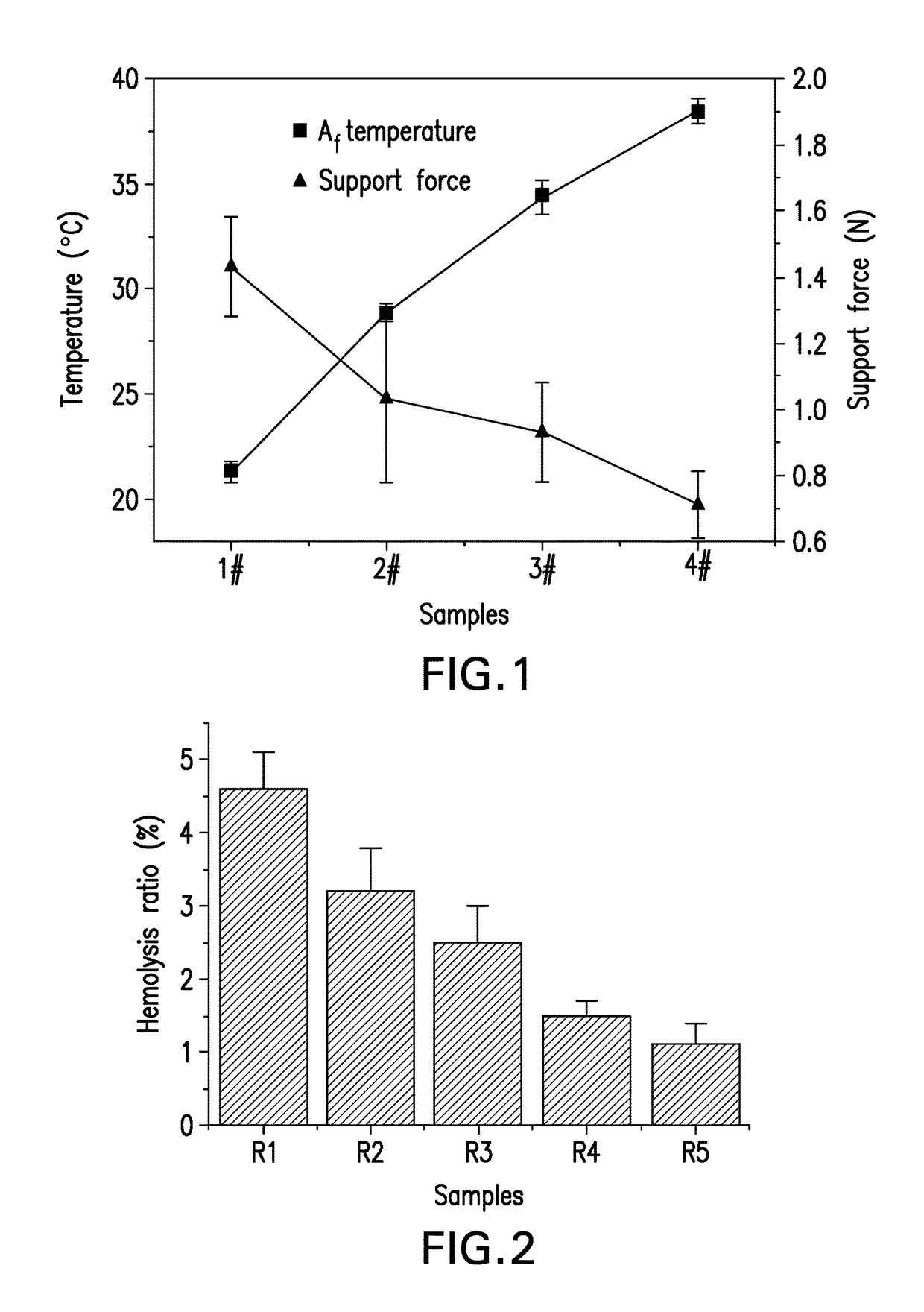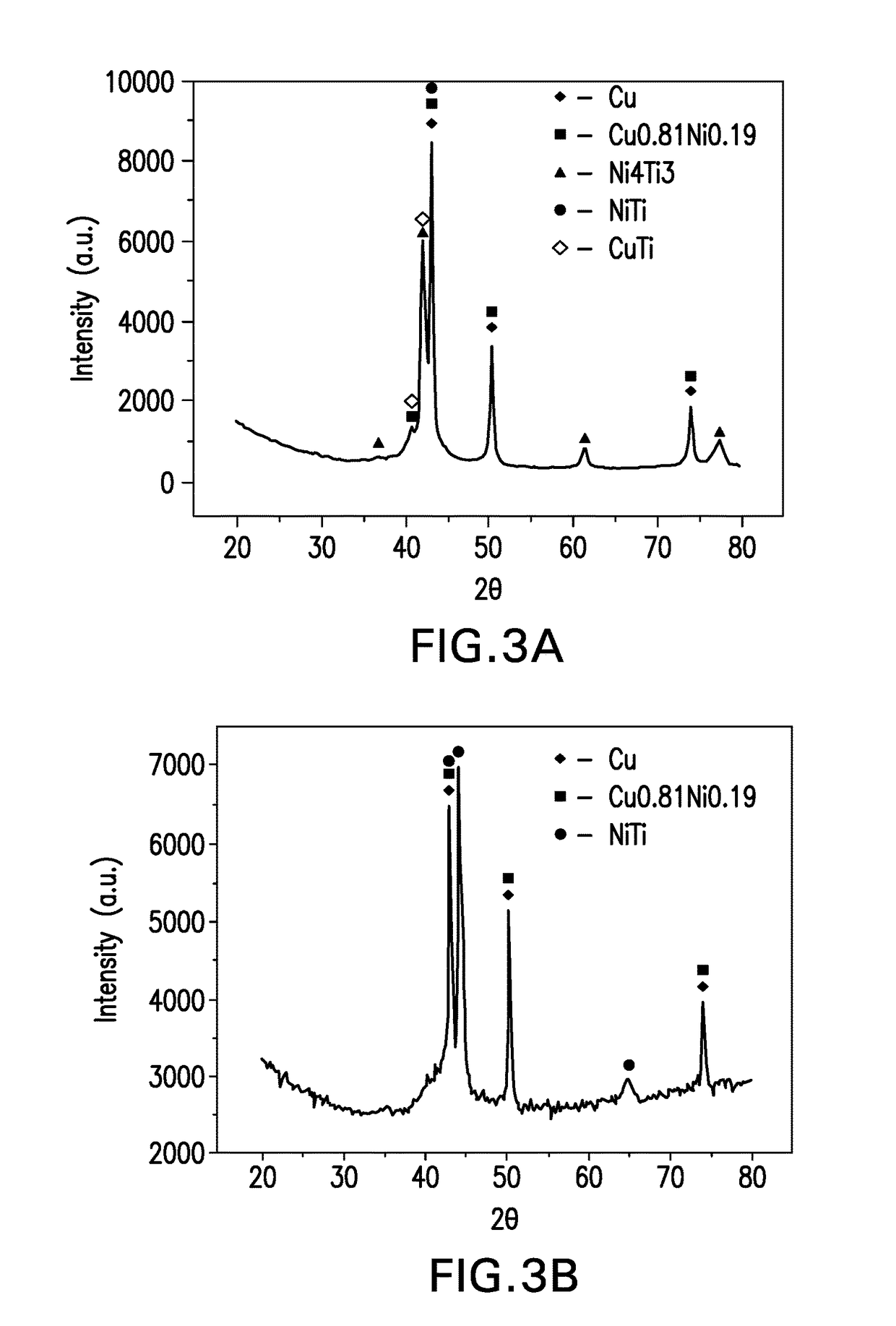Medical instrument coating and preparation method therefor and medical instrument comprising coating
a technology of medical instruments and coatings, applied in the field of medical instruments, can solve the problems of high morbidity and case fatality rate, difficult clinical treatment problem, and lifelong use of anticoagulants or other complications, and achieve the effects of improving the recovery rate of medical instruments, preventing endothelialization of the surface of medical instruments, and good blood compatibility
- Summary
- Abstract
- Description
- Claims
- Application Information
AI Technical Summary
Benefits of technology
Problems solved by technology
Method used
Image
Examples
embodiment 1
[0046]A copper-titanium coating is prepared on a surface of a vena cava filter made of nickel-titanium memory alloy. The structure of the vena cava filter has been described in details in the prior art. A main portion of the vena cava filter includes a filter screen composed of a plurality of fine support rods, with a cross-sectional area of each of the support rods being not more than 1 mm2. The vena cava filter having a fine nickel-titanium alloy structure is first cleaned, dried and stored in a dry vessel for standby. The target material of the cathode is titanium target (Ti 99.99%) and copper target (Cu 99.99%). In a vacuum chamber, the target material is heated by a certain target current such that titanium atoms and copper atoms are evaporated and ionized on the surface of the target material. Under the action of a sputtering bias voltage, titanium ions and copper ions in a certain proportion are moved to the surface of the vena cava filer so as to form a copper-titanium coati...
embodiment 2
[0053]Under the same pressure of the vacuum chamber, the same target current, the same sputtering bias voltage and the same pulse duty ratio, the mechanical property of the vena cava filter is controlled by changing the temperature of the vena cava filter (i.e., the deposition temperature of the coating).
[0054]For example, the heating power supply is enabled and kept at a high power to increase the temperature of the vena cava filter up to 200° C., the sputtering bias voltage is adjusted to 50V, and other conditions refer to Embodiment 1, so that a copper-titanium coating having a thickness of about 200 nm may be obtained. Through a test, the copper content of the coating is as much as that of the copper-titanium coating in Embodiment 1 because the copper target current and the titanium target current, as primary factors for determining the copper content of the copper-titanium coating, remains unchanged.
[0055]The heating power supply is kept at a lower power to increase the tempera...
embodiment 3
[0069]Common intravascular stents are also made of nickel-titanium alloy, and also have many fine support rods (their cross-sectional area is not more than 3 mm2). With reference to the method described in the forgoing embodiments, preparing a copper-titanium coating on the surface of an intravascular stent may improve the recoverability of the intravascular stent, and does not damage the mechanical property of the intravascular stent.
[0070]FIGS. 5A, 5B and 5C show pictures when an intravascular stent having a copper-titanium coating is implanted in animal body for one month, which may simulate the conditions of the implantation in human body. The copper mass percentage of the copper-titanium coating of the intravascular stent shown in FIG. 5B is 40%, while the copper mass percentage of the copper-titanium coating of the intravascular stent shown in FIG. 5C is 60%. After the intravascular stent is implanted in animal body for one month, the two copper-titanium coatings can completel...
PUM
| Property | Measurement | Unit |
|---|---|---|
| thickness | aaaaa | aaaaa |
| time | aaaaa | aaaaa |
| area | aaaaa | aaaaa |
Abstract
Description
Claims
Application Information
 Login to View More
Login to View More - R&D
- Intellectual Property
- Life Sciences
- Materials
- Tech Scout
- Unparalleled Data Quality
- Higher Quality Content
- 60% Fewer Hallucinations
Browse by: Latest US Patents, China's latest patents, Technical Efficacy Thesaurus, Application Domain, Technology Topic, Popular Technical Reports.
© 2025 PatSnap. All rights reserved.Legal|Privacy policy|Modern Slavery Act Transparency Statement|Sitemap|About US| Contact US: help@patsnap.com



